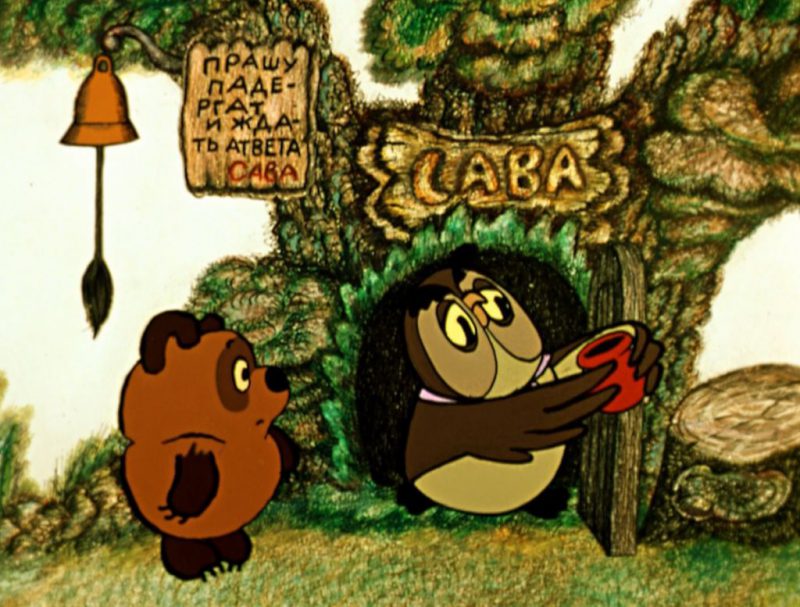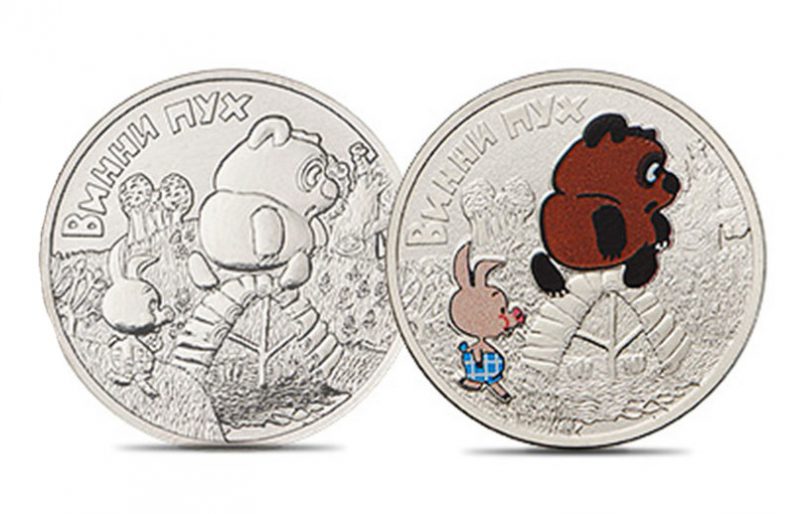Russian versions of world-famous stories: Winnie the Pooh
Some time ago we have told you about the Russian version of Mowgli. Today is the turn of Winnie the Pooh. Below you can find some interesting facts about the Soviet made cartoon and, of course, links to watch it.

The story of Winnie the Pooh first came to be in 1926 from the pages of the book of the English writer Alan Milne. In 1958, Russian children’s book writer Boris Zakhoder read Milne’s story and retold it in Russian.
In the 1960s and 1970s, Soyuzmultfilm studio released three animated films created under the direction of Fedor Khitruk, they were called “Winnie the Pooh”, “Winnie the Pooh Goes Visiting”, and “Winnie the Pooh and the Day of Concerns”.
The charm of Russian Winnie the Pooh
So what is the difference between the Russian Winnie the Pooh and his American brother?
The first thing, of course, is the unusual style of the Russian cartoon that looks like a child’s drawing. Sometimes, on the background, you can notice huge insects sitting on giant mushrooms. Apples, pears, plums and other fruits grow on trees at the same time.
In the Soviet version, you will not find either the Tiger, nor Christopher Robin, but their absence does not break the story. Moreover, in the absence of Christopher, the characters are perceived more like real animals rather than toys.
According to many viewers, including American ones, the Russian bear is simplier and funnier than his American brother. While the American Winnie looks like a toy with a big belly, the Russian one actually looks more like a real brown bear, although with legs not attached to the body.
The Russian Winnie the Pooh is always up to something: one day he pretends to be a cloud to be able to steal honey from the bees, the other day he goes to visit the rabbit so he can eat for free. When he finds himself in an unclear situation, he asks himself questions and then tries to answer them using his own funny logic. He devises plans on the go while mixing them with philosophical observations about life.
The voice of the Soviet Winnie the Pooh is not soft but a bit creaky and even “smoky”. The director tried out many actors for the role of Winnie the Pooh, but he was not satisfied with any option – the voices were too low. Then the sound engineer suggested to speed up the record, and everyone liked the effect. Accelerated recording was applied not only to Yevgeny Leonov, who voiced Winnie the Pooh, but also to other characters.
Soviet Winnie constantly composes songs on the go, and when there are not enough words, he replaces them with “pam-param-param-pam-pam”. His songs are so charmingly stupid and simple, that virtually every single Russian knows them by heart:
Кто ходит в гости по утрам, тот поступает мудро!
Известно всем, тарам-парам, на то оно и утро!
The one who visits friends at dawn is wiser than the rest!
It’s known well, taram-param, such timing is the best!
Many of his phrases became famous quotes (here we give you both English and Russian versions to avoid any nuance getting lost in translation):
– Пух, тебе что намазать — меду или сгущенного молока?
– И того и другого, и можно без хлеба.
– Pooh, what do you want (on the bread) – honey or condensed milk?
– Both, and no need for the bread.
– Ты не забывай, что у меня в голове опилки. Длинные слова меня только огорчают.
– Do not forget that I have sawdust in my head. Long words only upset me.
– Какой сегодня день?
– Сегодня.
– Мой любимый день!
– What day is it today?
– Today.
– My favorite day!
– Нужно делать так, как нужно. А как не нужно, делать не нужно!
– It is necessary to do as it should be done. And as it should not be done, no need to do!
– Не такое это простое дело — ходить в гости! Когда мы идём, главное делать вид, что мы ничего не хотим.
– It’s not easy to go visiting! When we go, the most important is to pretend that we do not want anything.
The cartoon was loved by Russians. Its popularity has not decrease to this day. In 1988, a postage stamp with images of Winnie the Pooh and Piglet was even released.

Not so long time ago, the Bank of Russia issued silver commemorative coins picturing Winnie the Pooh.

Watch Russian Winnie the Pooh
Unlike the American version that can be interesting to watch mostly to kids, the Russian version can be well enjoyed by adults as well. Today we offer you to watch all three series of this cartoon with English subtitles:






